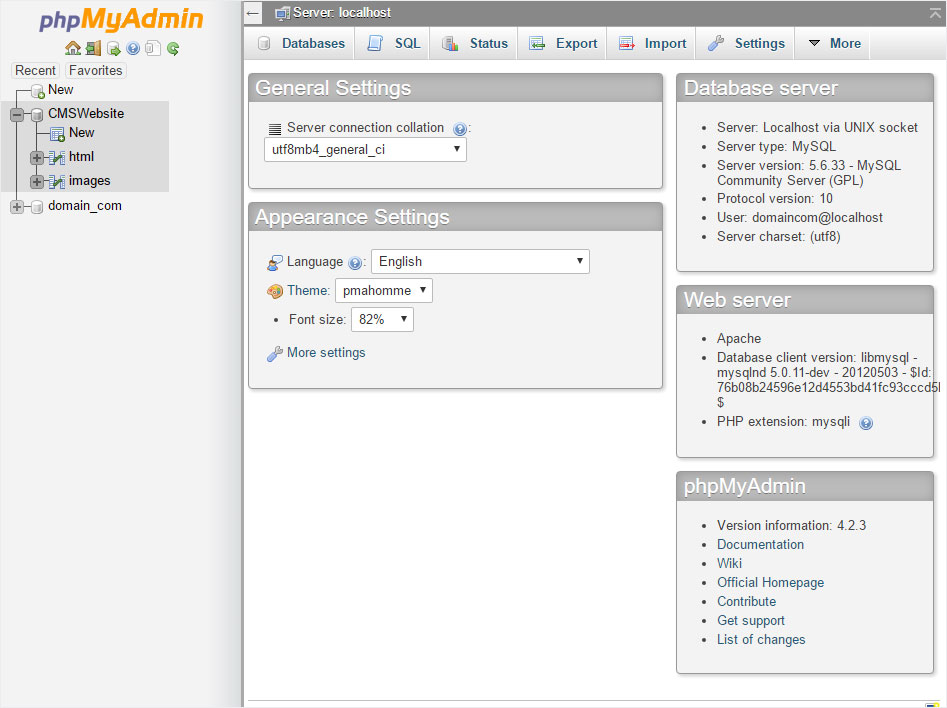

- #Image in mysql database workbench for free#
- #Image in mysql database workbench how to#
- #Image in mysql database workbench pro#
- #Image in mysql database workbench code#
Double-click the first entry in one of your columns and type the data to be added. For the fastest route to success, use the result grid (which is the default). In this window, you can either use the result grid or open the form editor. You will then find yourself in a window that allows you to enter data ( Figure E). In order to start adding data to a table, right-click the table (in the SCHEMAS pane) to be modified and click Select Rows. In previous incarnations of MySQL Workbench, a button could be found on the home screen that took you directly to the table data entry section. It’s now time to populate that table with some data. Once you do that, you can then select the Datatype for the column ( Figure D).Ĭontinue adding columns until your table is complete. In the new window ( Figure C), name the table.ĭouble-click under Column Name, and you should be able to type the name of the first column. Expand that listing, right-click the Tables entry, and select Create Table. I’ve created a database called SERVERS, that will be listed in the SCHEMAS pane. Once the schema is created, close the SQL Script window. Once you name your schema, click the Apply button and, when prompted, review the SQL Script and click Apply again. In the resulting window ( Figure B), give the schema (database) a name and (if necessary) select a Default Collation. From the database home screen ( Figure A), right-click a blank spot under the SCHEMAS pane and select Create Schema. Open MySQL Workbench and connect to your database server. The first thing to do is create a database (aka Schema).

I will assume you already have MySQL Workbench installed.
#Image in mysql database workbench how to#
You need to make sure you have MySQL set up for remote connections ( See: How to set up MySQL for remote access on Ubuntu Server 16.04 (This also works for Ubuntu 18.04). My instance of MySQL Workbench will connect to a MySQL database, housed on Ubuntu Server 18.04. I’ll use MySQL Working 6.3, which has drastically evolved from older versions of the tool.

#Image in mysql database workbench pro#
SEE: Server deployment/migration checklist (Tech Pro Research) What you need To do so, I’ll walk you through the process of creating a database, adding a table to that database, and then adding data to the table. I’m going to show you just how easy it is to make use of MySQL Workbench. Networking: Must-read coverageĥ programming languages network architects should learn (free PDF)īehind the scenes: A day in the life of a database administratorĢ0 steps to decommission a redundant data center facilityġ7 Terminal commands every user should know It’s cross-platform, open source, and incredibly easy to use. This particular tool is one of the finest locally installed MySQL client tools you’ll find. Fortunately, for those users, there are plenty of GUIs available to make the task easier. To others, however, the command line is too cumbersome to be efficient. To them, it’s as efficient as a work environment can be.
#Image in mysql database workbench code#
Thanks to some fine developer touches like syntax highlighting and error parsing, it is very easy to code with MySQL Workbench.Many database administrators are comfortable working within the command line. Some of the other available data modeling features are schema synchronization, validation and reverse/forward engineering. Even managing larger databases seems to be a simple task by grouping tables using colored layers. The outfit of the application is its biggest advantage in our opinion. Basically, with MySQL Workbench version 6.4, you can connect to existing databases, edit data, run SQL queries, manage objects and even edit scripts. Your workspace is divided into three different subdivisions – one for SQL development, another for data modeling and a section for server administration. Please be aware that if you don't have advanced database skills, you will probably need a bit more time to get used to it, which is absolutely normal, we think. Thanks to the great interface, you are able to perform all kinds of MySQL tasks quickly and easily. MySQL Workbench is a proper MySQL database alternative that allows developers to handle their tasks easily. Database Administration (replacing MySQL Administrator).SQL Development (replacing MySQL Query Browser).
#Image in mysql database workbench for free#
The app is distributed for free so you can have it right away. It provides you with both design and management functions within a single development virtual environment. MySQL Workbench version 6.4 is a database modeling utility, which is capable of comprising SQL development and administration, especially developed for MySQL administrators.


 0 kommentar(er)
0 kommentar(er)
